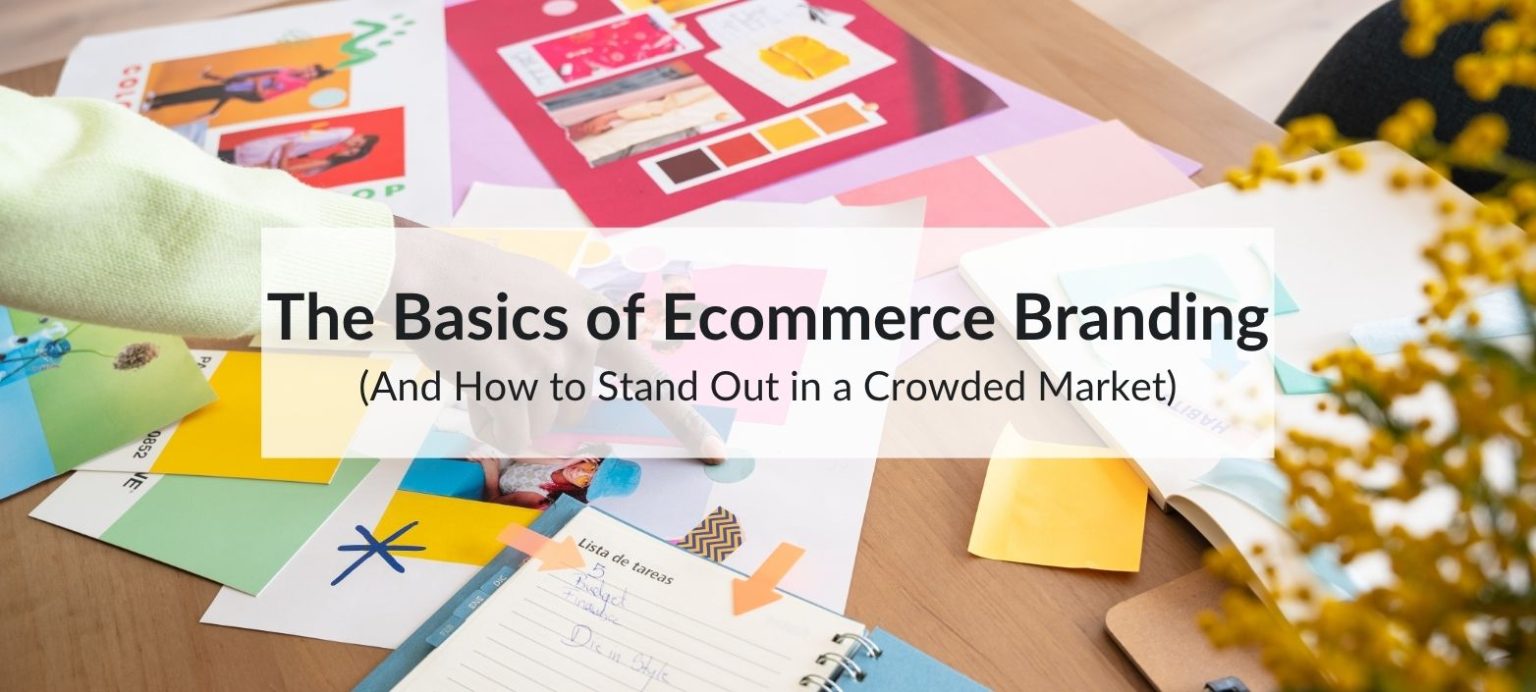Establishing a strong ecommerce brand goes beyond designing a logo or choosing a colour palette. In an environment where consumers are faced with endless online shopping choices, ecommerce branding needs to be thoughtful, consistent, and customer-focused to make any lasting impact.
Table of Contents
What Is Ecommerce Branding?
Ecommerce branding refers to the personality, voice, values, and visual identity that a business communicates across every customer touchpoint, from product pages and packaging to social media and email marketing. It sets expectations, builds trust, and influences buying decisions.
Example: A skincare company might centre its brand around clean ingredients and transparency. That theme would shape everything, from its homepage messaging to the way it handles customer service inquiries.
Why Branding Matters for Ecommerce Stores

Strong ecommerce branding builds recognition and loyalty. It allows businesses to be remembered even when customers aren’t actively shopping. Over time, this can reduce reliance on paid ads and increase repeat sales.
Shoppers are not just buying products. They’re buying into a story, a lifestyle, or a shared set of values. When that story feels authentic, customers are more likely to stick around.
Elements of a Strong Ecommerce Brand
Clear Brand Voice and Messaging
The tone and language used on a website, packaging, and social media should reflect the brand’s identity. A high-end jewellery brand might use elegant, refined language, while a playful pet brand might lean on puns and emojis.
Tip: Document brand tone guidelines so everyone on the team stays consistent, from copywriters to customer support agents.
Visual Consistency
Fonts, colours, imagery, and layout should be uniform across all platforms. This visual alignment reinforces brand memory. Tools like Coolors or Canva Brand Kits can help ecommerce teams maintain consistency.
Example: Glossier, the beauty brand, is instantly recognisable for its minimalist design, pastel tones, and soft lighting in product photos.
Packaging and Unboxing Experience
Packaging isn’t just functional since it’s part of the branding. A thoughtful unboxing experience can boost word-of-mouth marketing and lead to user-generated content. Ecommerce businesses that ship in plain packaging risk missing this opportunity to stand out.
Ecommerce Branding Strategies to Elevate Your Store
Once your foundational brand elements are in place, it’s time to bring them to life through action. The following five strategies are commonly used by successful ecommerce brands to strengthen their identity and stay memorable.
1. Create Branded Loyalty Programs
1.1 Build Repeat Engagement
Loyalty programs are more than just a way to increase sales. When designed with your brand identity in mind, they encourage customers to stay connected long-term. Think of perks, point systems, or exclusive early access that reflect your brand’s personality.
1.2 Keep the Experience On-Brand
From the naming of loyalty tiers to the design of emails and rewards pages, ensure the experience feels like an extension of your overall brand. Use consistent visuals and voice to reinforce recognition and trust.
2. Partner with Like-Minded Brands
2.1 Reach New Audiences Authentically
Collaborating with complementary brands helps introduce your store to new customers who already share similar interests and values. These partnerships feel more genuine when the brands align in tone, mission, or style.
2.2 Co-Create Experiences or Products
Limited-edition products, giveaways, or campaigns created in partnership help tell a bigger story and create buzz. Ensure the branding across visuals, messaging, and packaging is thoughtfully balanced between both brands.
3. Use Consistent, On-Brand Customer Support
3.1 Match the Tone of Your Brand
Your customer service team should reflect the same voice your customers see on your homepage or social media. Whether it’s witty, elegant, or friendly, that tone should carry through in emails, live chat, and even refund policies.
3.2 Turn Support Into a Brand Moment
Add a personal touch to make support interactions memorable. A handwritten thank-you note or a surprise discount can make a big impression and show that your brand values the relationship.
4. Launch Limited-Edition Drops
4.1 Create Anticipation
Time-limited product releases give customers a reason to act fast and pay attention. Drops tied to seasons, holidays, or special themes create excitement and encourage regular visits to your store.
4.2 Promote with Branded Campaigns
Use branded visuals, product pages, and social media content to support each drop. The messaging should align with your usual tone, whether it’s bold, playful, or minimalist.
5. Educate Through Branded Content
5.1 Share Useful and Aligned Knowledge
Publishing helpful content builds authority and trust while reinforcing your brand values. This could include blog posts, video tutorials, or product guides that match what your customers care about.
5.2 Keep the Look and Feel Consistent
Your content should mirror your brand voice and design, whether it’s a TikTok how-to or a newsletter guide. This consistency makes your brand more memorable and signals professionalism.
Common Mistakes in Ecommerce Branding

- Inconsistent Messaging: Using different tones or slogans across channels can confuse customers.
- Focusing Too Much on Trends: A brand that constantly shifts to follow what’s popular may lose its unique identity.
- Neglecting Post-Purchase Touchpoints: Branding doesn’t stop after checkout. Confirmation emails, delivery updates, and even return processes all shape perception.
Tools to Support Ecommerce Branding
- Shopify’s Branding Tools: Helps create logos, slogans, and domain names.
- Adobe Express: Assists with designing marketing materials that align with brand aesthetics.
- Klaviyo: Customises email marketing with branded templates and flows.
These tools support consistency and reduce the manual effort required to maintain a brand identity.
Final Thoughts
A strong ecommerce brand is built over time, not in a single moment. It grows and evolves as your audience, products, and goals shift. Listening to your customers and staying true to your values helps keep your brand relevant and relatable. While great products may spark that first purchase, it’s your brand that makes people want to return.
For ecommerce stores looking to create differentiation in a saturated space, a clear brand identity is one of the most powerful tools available. Shoppers often forget the product names, but they remember how a brand made them feel.

